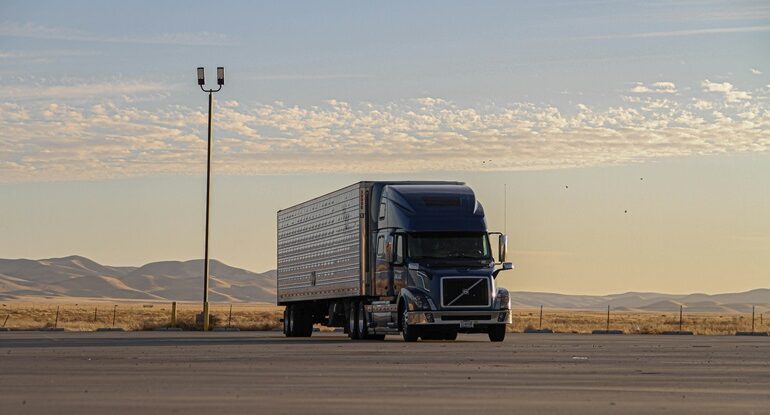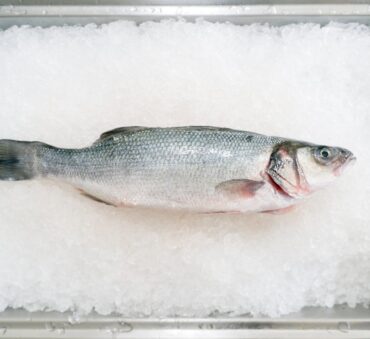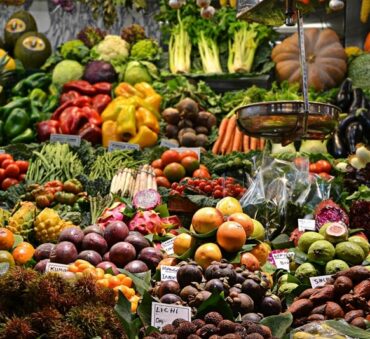Did you know that the amount of food produced but never eaten would be sufficient to feed two billion people?
That’s more than twice the number of undernourished people across the globe, showcasing the severe consequences of food waste. In the United States alone, food waste is estimated at between 30-40 percent of the food supply. As this issue gains more widespread attention, there’s an increasing interest in waste management techniques, including strategies directed at food loss during transportation.
While there are few statistics on how much food is wasted during transportation, the FAO estimates that 30-40% of total food production is lost before it reaches the market, with transportation inefficiencies contributing to the issue. Keep reading to learn more about food waste during transportation, where we’ll discuss common challenges, causes, and innovative strategies to minimize its effects.
Key Takeaways
- The causes of food loss during transportation include poor handling and packaging, inadequate storage conditions, transportation delays, and infrastructure issues. To address these issues, businesses should perform a food waste audit and create a tailored waste reduction strategy.
- Effective strategies to reduce waste include improved packaging solutions, enhanced cold chain management, efficient logistics and planning, the implementation of training programs, and the adoption of advanced technology.
- Advanced technology opens new opportunities to streamline processes, reduce waste, and reach sustainability goals. GPS tracking systems, IoT and sensor technologies, and predictive analytics are all examples of technologies that are transforming the transportation industry.
- Sustainable practices in the food transportation industry are also on the rise due to their environmental benefits. Strategies include eco-friendly packaging, green transportation initiatives, optimized route planning, improved collaboration and resource sharing, and alternative transportation methods.
Understanding Food Waste in Transportation
An important part of reducing food waste in the supply chain is understanding the different components of food transportation. Keep reading to explore the 4 modes of food transportation and the key players who make a difference.
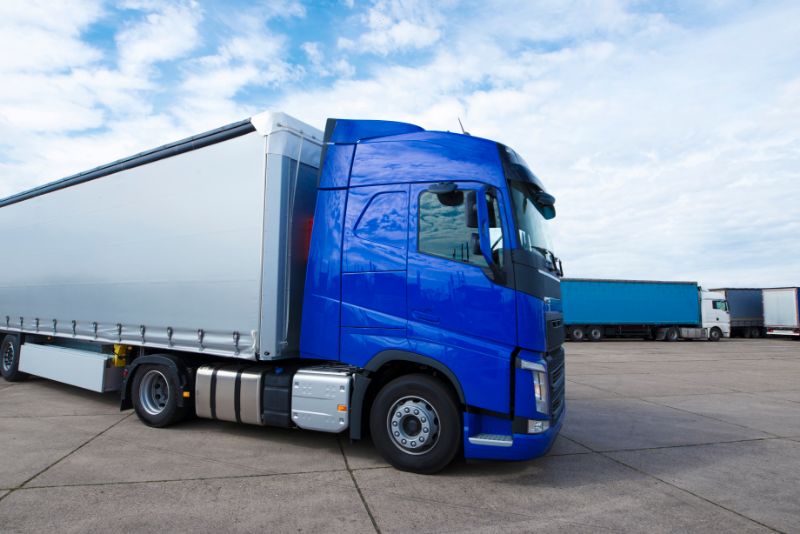
Modes of Food Transportation
There are various modes of food transportation, each with their own challenges and advantages. This includes:
- Road transport: Road transport is the most common mode of transportation due to its versatility, often being utilized for short and medium distances. This mode of transportation typically delivers food items from farms to local markets, food processing units, and supermarkets, making it an appealing choice for its accessibility.
- Rail transport: Rail transport is another common mode of transportation due to its ability to carry large volumes of food products over long distances. This option is generally considered more environmentally friendly than road transport due to its energy efficiency. While this is a cost-efficient and reliable option, it has less flexibility when compared to road transport.
- Air transport: Air transport is the fastest method for transporting goods, making it ideal for transporting perishable food items across continents. As a high-speed option, air transport guarantees the freshness of food products but comes with higher costs and limited capacity.
- Sea transport: Sea transport is an essential method for international food transportation. This is the most economical mode for large quantities but requires longer transit times, therefore increasing the risk of spoilage.
Key Players in Food Transportation
Effective transportation logistics are crucial for minimizing spoilage and ensuring that goods reach their destination in optimal condition. The key players who make this possible include:
- Shippers: Shippers bear the primary responsibility for ensuring quality and safety during food transportation. Shippers must determine the right mode of transportation for their specific food items and implement written procedures to prevent cross-contamination and ensure temperature control.
- Carriers: Carriers are responsible for ensuring smooth transport after receiving the goods from the shipper. Their key responsibilities include maintaining the vehicles in good condition and ensuring they meet all necessary sanitary requirements for food transportation. Carriers must also follow the agreed-upon conditions of the shipper, such as specific temperature specifications, to prevent spoilage.
- Freight forwarders: Freight forwarders coordinate between shippers and carriers to ensure the smooth and efficient transportation of food products. Their primary responsibilities include handling paperwork, ensuring timely deliveries, and managing food waste logistics, making them an important component in reducing food waste during transportation.
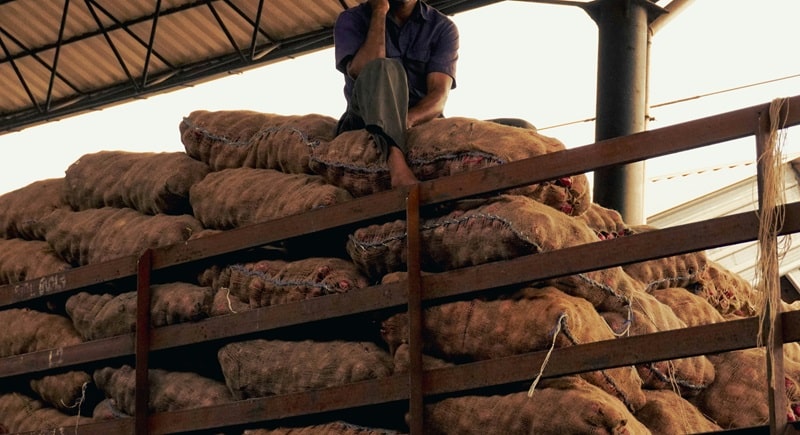
Challenges in Food Transportation
There are many obstacles that lead to food waste in transportation, including:
- Temperature control and cold chain logistics: Maintaining consistent temperatures during transportation is crucial to guaranteeing the safety and quality of food products. However, fluctuating external temperatures, inefficient cooling systems, and lengthy transit times all affect temperature control during transit. To address these issues, businesses should invest in high-quality refrigeration equipment, adopt monitoring devices that detect inefficiencies in real-time, and provide comprehensive staff training to prevent spoilage.
- Regulatory compliance: To increase food safety, regulatory frameworks have been established to govern food transportation. A great example of this is the FDA Food Safety Modernization Act, an act that establishes requirements for shippers, loaders, carriers by motor or rail vehicle, and receivers. To ensure compliance with national and international policies, businesses must be up to date with changing regulations, considering the unique requirements of their specific products. Some of the strategies businesses can implement to stay compliant include regular vehicle inspections and adherence to temperature control guidelines.
- Infrastructure issues: Poor road conditions, a lack of refrigerated support, and insufficient storage and transport facilities all contribute to food waste during transportation. That said, improved infrastructure is required to reduce spoilage and minimize waste.
- Logistical challenges: There are various logistical challenges that can reduce a product’s shelf life, including traffic congestion, mechanical failures, administrative delays, poor packaging, and inefficient handling practices. To prevent spoilage, businesses should invest in advanced technology and train staff in best practices.
Identifying the Causes of Food Waste During Transportation
By identifying the causes of food waste during transportation, businesses can create tailored strategies to minimize its effects. That said, common causes include:
- Poor handling and packaging: Improper handling and packaging can cause contamination, shorten a product’s shelf life, and significantly contribute to food spoilage during transportation. Poor handling techniques include rough handling, dropping, and stacking issues, while packaging inefficiencies may involve inadequate sealing, improper labeling, and the use of non-durable materials.
- Inadequate storage conditions: Businesses that fail to maintain proper storage conditions, such as appropriate control over temperature and humidity levels, are at risk of premature spoilage. By ensuring optimal storage conditions, businesses can preserve the quality of food and reduce food loss during transportation.
- Transportation delays: Delays in transport lead to reduced shelf life and increased spoilage, especially for highly perishable food items. Logistical inefficiencies that lead to waste may include traffic congestion, mechanical failures, and administrative hold-ups.
- Infrastructure issues: Inadequate infrastructure and logistics systems, such as poor road conditions and a lack of refrigerated transport facilities, are large contributors to food waste in transportation. This is especially true in developing countries, where large amounts of waste are produced before reaching the market.
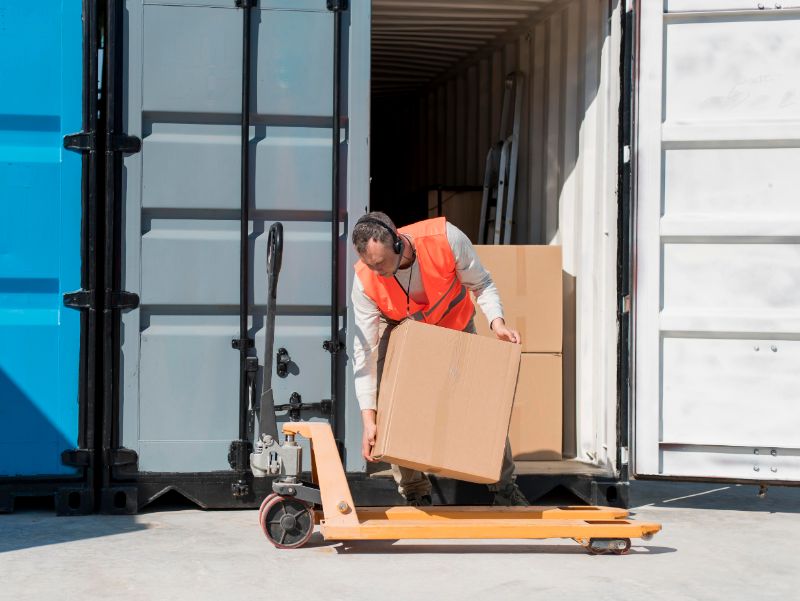
Effective Strategies to Reduce Food Waste During Transportation
Businesses can explore the following solutions to reduce food waste during transportation:
- Improved packaging solutions: Various packaging solutions have emerged to extend the shelf life of products, such as vacuum packing, modified atmosphere packaging, and the use of biodegradable materials. These solutions help preserve food quality during transportation, therefore reducing the financial loss associated with waste.
- Enhanced cold chain management: To improve cold chain management, companies should use temperature-controlled storage facilities and vehicles, improve transportation coordination, and adopt advanced technologies. Smart cold chain transport technologies are critical to minimizing waste, offering real-time temperature monitoring and automated alerts for temperature deviations.
- Efficient logistics and planning: Streamlined transport networks, timely deliveries, and collaborative efforts all work to improve transportation logistics. To improve logistics planning, businesses can leverage advanced tools and technologies like IoT and AI for real-time tracking, route optimization, and predictive analytics. Businesses can also perform a food waste audit to identify waste sources and quantities in order to create a tailored waste reduction strategy.
- Training and education: Training programs are an important part of educating transporters and handlers on best practices for minimizing waste. Standard operating procedures and regular training programs should identify proper handling techniques and maintenance of storage conditions to reduce food loss during transportation.
- Technology and innovation: The adoption of technology is an important step towards streamlining processes and reducing large-scale waste. Technologies like IoT and AI have real-time monitoring capabilities, smart sensors, and blockchain for supply chain transparency. These advancements enable businesses to improve the accuracy of their food waste tracking and enhance their sustainability efforts.
Best Practices for Food Transportation
Best practices for food transportation include:
- Quality control measures: Quality control helps maintain the integrity of food during transit, therefore minimizing spoilage and reducing the environmental impact of food waste. There are various quality control measures that businesses can adopt, including regular equipment inspections, sanitation practices, temperature controls, and monitoring systems.
- Collaboration in the supply chain: Increased collaboration between shippers, carriers, and freight forwarders enables more efficient planning and execution of transportation schedules. This includes the sharing of information about food safety risks, best practices, and regulatory requirements to ensure effective food transportation.
- Risk management strategies: Risk management strategies help businesses react quickly to inefficiencies by identifying potential hazards and implementing mitigation strategies. This includes contingency planning, establishing traceability systems, and performing regular risk assessments.
Innovations in Food Transportation
Innovative solutions have emerged to reduce food waste in transportation, including:
- Technology advancements: Businesses are increasingly adopting technology to fight food waste, opening new opportunities to streamline processes and reach sustainability goals. For instance, GPS tracking systems help monitor vehicle location, while IoT and sensor technologies enable the continuous monitoring of temperature, humidity, and other critical variables. As businesses continue to explore how AI can help with food waste management, many see an improvement in operations, with data analytics playing a big role in analyzing traffic patterns, weather conditions, and road quality to optimize delivery routes.
- Sustainable practices: Many sustainable practices are being adopted in the transportation industry to reduce the carbon footprint of food waste. These practices include using eco-friendly packaging, implementing green transportation initiatives, optimizing route planning, enhancing collaboration and resource sharing, and exploring alternative transportation methods.
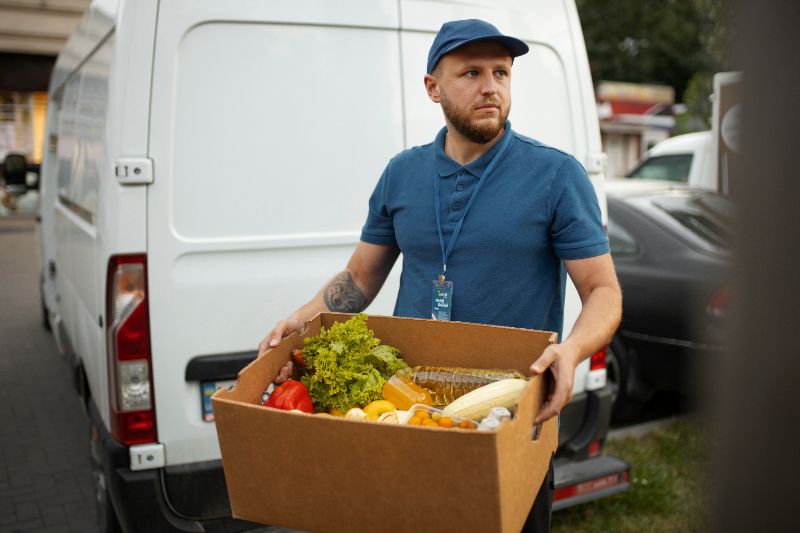
Future Trends in Food Transportation
There are multiple trends that have the potential to change current standards in the food transportation industry. This includes:
- Automation and robotics: Automation and robotics play an important role in streamlining processes, working to enhance efficiency and accuracy in food transportation. Technologies like automated sorting and packing systems and robotic loading and unloading of goods show great potential for reducing human intervention and errors.
- Blockchain in supply chain visibility: Blockchain is a type of shared database that enhances transparency, traceability, accuracy, and cooperation. Its role in providing secure and immutable record-keeping makes it a valuable tool in the transportation industry.
- Artificial intelligence in route planning: AI-powered algorithms have shown great potential for reducing food waste in transportation. By analyzing factors like traffic patterns, weather forecasts, and vehicle conditions, these algorithms can determine the most efficient routes.
- Low-code platforms: With low-code platforms on the rise, businesses can easily obtain custom software applications, allowing them to quickly adopt new digital solutions and technologies to meet the changing needs of the food transportation industry.
The Bottom Line
Food waste has gained widespread attention due to its severe environmental, economic, and social consequences. As businesses become increasingly aware of the problem, we expect to see even more efforts towards reducing food loss during transportation, with increased collaboration throughout the supply chain making way for more efficient practices.
At Shapiro, we leverage innovative technology and solutions to provide environmentally friendly food waste disposal services. We’ll work closely with your business to create a tailored solution that meets your specific goals and requirements.
Contact us to learn more about our organic waste management solutions.
Baily Ramsey, an accomplished marketing specialist, brings a unique blend of anthropological insight and marketing finesse to the digital landscape. Specializing in educational content creation, she creates content for various industries, with a particular interest in environmental initiatives.
